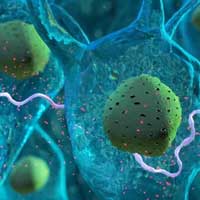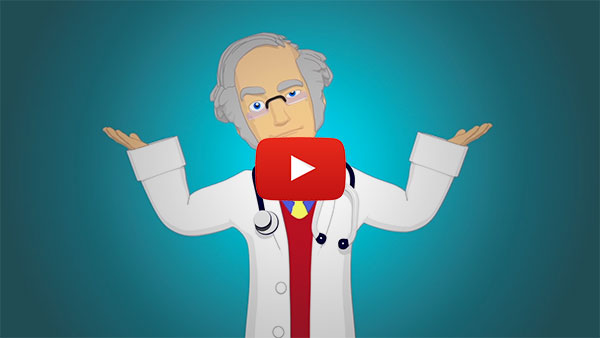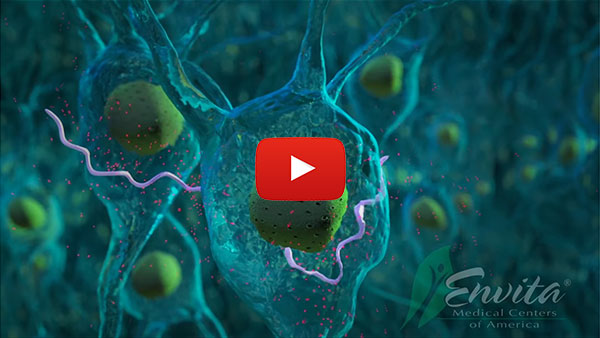Symptoms of Lyme Disease - The Great Imitator

The symptomology of Lyme disease is varied and diverse, resulting in significant difficulty in diagnosis. Known as "The Great Imitator," Lyme disease can mimic the symptoms of Fibromyalgia, Chronic Fatigue Syndrome, MS, ALS, Parkinson's and Alzheimer's, as well as more than some 350 other diseases. When patients do present with a number of infections and coinfections, including other tick-borne infections, it is this complicated presentation that we call Lyme Disease Complex.
What Happened to the Classic "Bull's-Eye" Rash?
An initial bite from a tick can cause a rash that will appear in three months to a year. While the characteristic "bull's-eye" rash (erythema migrans) is associated with Lyme disease, the rash only appears in an estimated 50% of infected individuals, or it may appear in a different form. If this rash does appear, it will generally wane over a two to a four-week period. 70 percent of all patients who do present with Lyme disease complex never recall such a rash.
In the first month to six weeks following a bite from an infected tick, the initial symptoms that appear may include flu-like symptoms such as malaise, chills, fever, sore throat, achiness, and swollen lymph nodes. After these symptoms pass, infected persons will generally develop muscle and joint pain, which can be severe, temporary, and manifest in different areas. Shooting, burning, and prickling sensations, as well as numbness, may also be experienced. Neurological problems, such as facial paralysis (Bell's palsy) may also occur, in addition to encephalitis and cognitive dysfunction, such as short-term memory loss. Panic, anxiety, or depression can also be caused by the infection.
Important to Remember
Importantly, Lyme disease does not follow the same course in all individuals. Our experienced LLMD (Lyme Literate Doctors) note that clinically, the patient may have multiple autoimmune disease diagnoses in addition to memory recall issues, along with neurological and digestive symptoms. Other symptoms indicative of Lyme can include:
- Cough, shortness of breath
- Unexplained fevers, chills, sweats
- Cystitis (bladder inflammation)
- Fatigue
- Chest plain/heart palpitations
- Cardiac irregularity
- Double/blurry vision, pain or floaters
- Photophobia (abnormal aversion to bright light)
- Hair loss
- Fever
- Tick bite(s)
- Rash at bite site or other areas
- Difficulty swallowing
- Swollen glands
- Sore throat
- Swelling around the eyes
- Unexplained weight loss/gain
- Buzzing, ringing or ear pain
- Difficulty eating
- Nausea or vomiting
- Diarrhea or constipation
- Tremors
- Eyelid/facial twitching or Bell's Palsy
- Joint pain and swelling
- Abdominal cramping/pain
- Irritable bladder or bladder dysfunction
- Testicular/pelvis pain
- Neck creaks, cracks or stiffness
- Joint or back stiffness
- Muscle pain or cramps
- Insomnia
- TMJ (jaw pain)
- Headaches
- Tingling or numbness
- Poor balance
- Difficulty walking
- Seizure activity
- Stabbing sensations
- Dizziness
- Personality changes
- Mood swings
- Irritability
- Depression
- Confusion
- Anxiety
- Difficulty concentrating or reading
- Gastritis
- Menstrual irregularity
- Loss of libido
- Trouble speaking
- Disorientation
At Envita, we examine and address all factors of Lyme disease to achieve accurate diagnosis and effective treatment. Addressing the varied symptomology of the disease is vital to improving patients' quality of life as well as boosting the body's ability to successfully rid itself of the disease-causing bacteria.
If you have any questions about Lyme disease and its coinfections, fibromyalgia or related autoimmune diseases, contact us at Envita today. Our staff is willing and waiting to answer any questions you may have.























